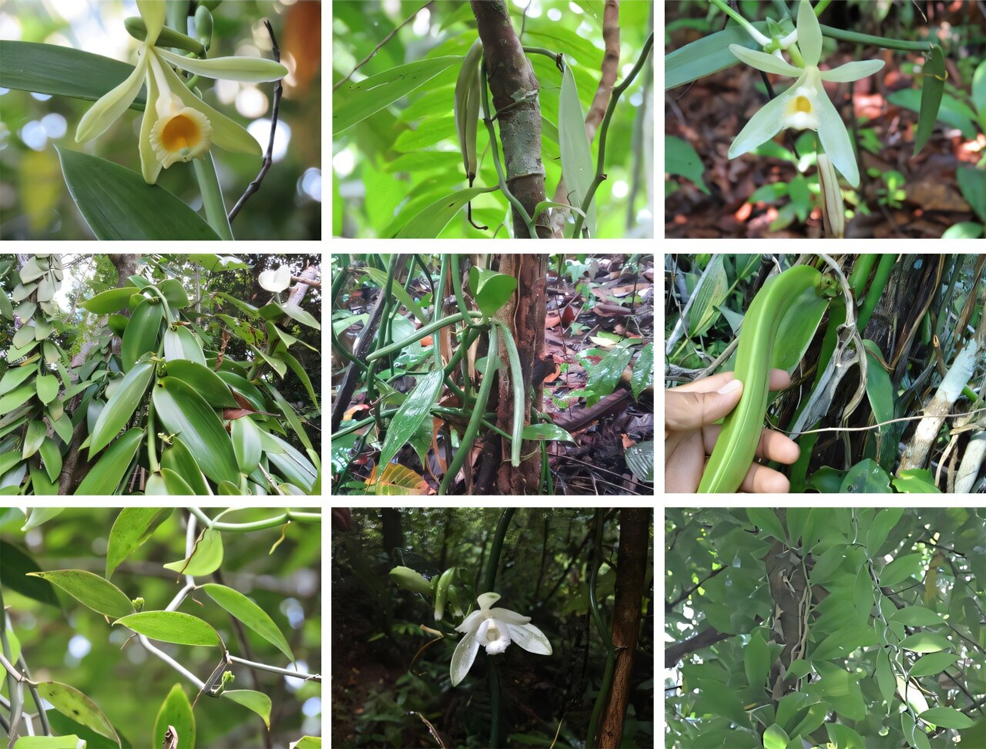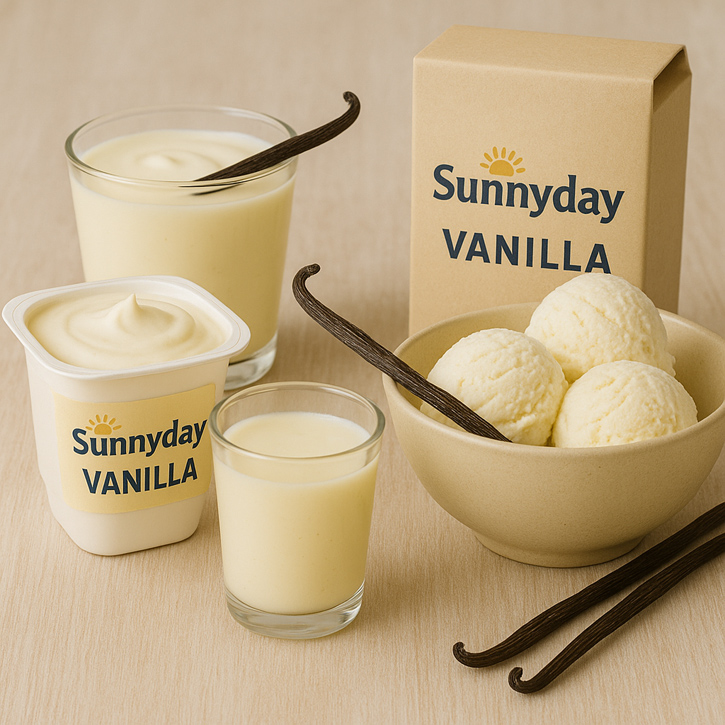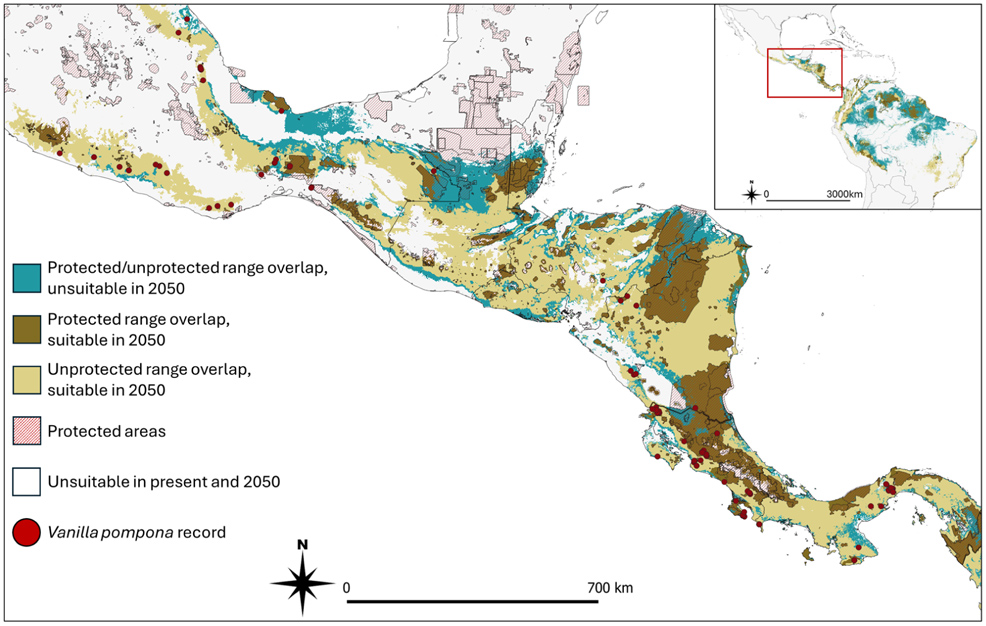
16th July 2025 Wild vanilla under threat due to climate by 2050 A study finds that climate change could disrupt the habitat overlap between wild vanilla species and their pollinators by 2050, threatening the survival of both. This mismatch may endanger global vanilla supply and limit the genetic diversity needed for future crop resilience.
Vanilla flavouring is widely used in food, pharmaceutics, and cosmetics. But the primary source, Vanilla planifolia, is vulnerable to diseases, drought, and heat – stressors expected to become more frequent under climate change. Scientists have now examined future warming scenarios to determine how climate change could cause "mismatches" in the habitat overlap of wild vanilla plants and their pollinating insects. "Climate change may lead to a reduced habitat overlap between Vanilla orchid species and their pollinators, resulting in a plant-pollinator decoupling that negatively affects the survival of wild vanilla populations," said Dr Charlotte Watteyn, a researcher at KU Leuven and Lankester Botanical Garden Research Center at the University of Costa Rica (UVR), and first author of a study that appears in the journal Frontiers in Plant Science. "Conserving the natural populations of wild Vanilla species, and the huge genetic diversity they hold, is crucial to ensure the future of vanilla, a key tropical crop for the global food industry," added senior author Professor Bart Muys, also of KU Leuven.
The team modelled the habitat distribution and overlap of 11 neotropical Vanilla species and seven previously observed pollinators under two climate scenarios. The 'middle of the road' scenario (SSP2.4-5) represents moderate challenges to both climate change mitigation and adaptation, and follows a pathway of balanced energy development, while the 'rocky road' scenario (SSP3-7.0) is characterised by greater challenges, heavier reliance on fossil fuels, and less global cooperation to mitigate climate change. They found that for seven Vanilla species, climate conditions could become more favourable by 2050 in both scenarios. These species could expand their habitats by up to 140%. For the other four species, the researchers found that the area with suitable habitat would shrink by up to 53%. For pollinators (i.e. bees), the future on a warming planet could be more dire. Habitat suitability of all pollinators was found likely to decline, with a slightly higher negative change under the SSP3-7.0 scenario. "Despite the possible increase in suitable habitat for some Vanilla species, their pollinator dependency may imperil the survival of natural populations," Watteyn explained. It is unclear if other pollinators can take the place of those that might disappear from wild vanilla habitats. "Vanilla species are known for their specialised relationships with pollinators, hence, they may experience difficulties in replacing pollinators" Watteyn added. "The future may look brighter for species that are not reliant on a single vector for pollination." Most species, however, usually depend on just one or a few certain pollinators.
Maintaining wild vanilla plants is not only important for biodiversity but also for agriculture. The commercially used crop species is characterised by low genetic diversity which can affect product yield, quality, and stability negatively, but agricultural resilience could be enhanced by diversifying crops. "Wild Vanilla species have potential to mitigate these problems as they continue to co-evolve in the wild, developing traits of interest for crop improvement – for example, drought and heat tolerance and pathogen resistance," explained Professor Muys. Many Vanilla species are already threatened, and natural pollination rarely occurs. Forest fragmentation, habitat loss, and extreme temperatures exacerbate an already dire scenario for the survival of the 'queen of all flavours'. "Collaborative research on the ecology and genetic diversity of wild vanilla plants across their natural distribution is paramount if we want to take vanilla breeding into the future, by ethically and sustainably using the local variation to answer global needs," said co-author Prof Adam Karremans, the director of Lankester Botanical Garden Research Center at UCR. These study results, the authors note, should be interpreted carefully as occurrence records for wild Vanilla species and pollinators are sparse. Habitat overlaps could shift when ecological interactions like seed dispersion and interactions with microorganisms, or disturbances like habitat conversion and illegal extraction are also included in the models. "Like cacao and coffee, vanilla is a global export crop with high international market value. It's grown to make profit, and is a key driver for rural development, agricultural innovation, and overall welfare," Watteyn concluded. "Cultivation benefits smallholder farming communities across the tropics, so there is an urgent need to enhance the resilience of vanilla farming systems."
Comments »
If you enjoyed this article, please consider sharing it:
|
||||||









